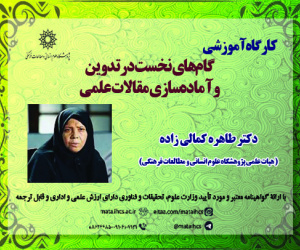تحلیل اثرات توسعه گردشگری بر زیست پذیری مناطق روستایی (نمونه موردی: روستاهای گردشگری شهرستان طارم) (مقاله علمی وزارت علوم)
درجه علمی: نشریه علمی (وزارت علوم)
آرشیو
چکیده
توسعه مناطق روستایی از گذشته تاکنون با چالش های ساختاری و مسائل کارکردی فراوانی مواجه بوده است و راهبردهای گوناگونی از سوی جامعه علمی ارائه شده است. یکی از این راهبردها که در کشورهای جهان نقش مؤثری در زیست پذیری مناطق روستایی به دنبال داشته است، رونق و توسعه گردشگری است. هدف از این پژوهش، تحلیل اثرات توسعه گردشگری بر زیست پذیری مناطق روستایی در شهرستان طارم است. تحقیق حاضر از لحاظ هدف، کاربردی و از لحاظ ماهیت توصیفی-تحلیلی بوده و برای جمع آوری اطلاعات از روش های کتابخانه ای و میدانی (پرسشنامه) استفاده شده است. جامعه آماری این تحقیق، 10 روستای گردشگری شهرستان طارم است که براساس گزارش سازمان میراث فرهنگی و صنایع دستی و گردشگری استان انتخاب شدند. برای انتخاب حجم نمونه با استفاده از فرمول کوکران 337 خانوار برآورد شده است و برای تجزیه وتحلیل اطلاعات از روش کمّی مبتنی بر آمار توصیفی (میانگین) و استنباطی (t تک نمونه ای، رگرسیون چندمتغیره و تحلیل مسیر) و مدل تاپسیس (به منظور مقایسه روستاهای مورد مطالعه از نظر وضعیت زیست پذیری) استفاده شده است. نتایج این تحقیق نشان می دهد که از نظر شاخص های توسعه گردشگری و زیست پذیری، مناطق روستایی دارای وضعیت مطلوب بوده است. همچنین می توان بیان کرد که اثرات توسعه گردشگری بر زیست پذیری مناطق روستایی حدود 69 درصد مثبت تلقی شده است؛ به طوری که بیشترین تأثیر مربوط به بُعد کالبدی با ضریب تأثیر کل 321/0 و بُعد اقتصادی با ضریب تأثیر کل 229/0 است و کمترین اثرات مربوط به بُعد زیست محیطی با ضریب تأثیر کل 091/0 است.Analysis of the Effects of Tourism Development on the Livability of Rural Areas Case Study: Tourism Villages of Tarom County
Rural development areas has faced many structural and functional challenges from the past until now, and various strategies have been proposed by the scientific community. One of these strategies, which has played an effective role in the livability of rural areas in the world, is the prosperity and development of tourism. The purpose of this study is to analyze the effects of tourism development on the livability of rural areas in Tarom County. The present research is applied in terms of purpose and descriptive-analytical in nature and library and field methods (questionnaire) have been used to collect information. The statistical population of this research is 10 tourist villages of Tarom County which were selected based on the report of the Cultural Heritage and Handicrafts Organization of the province. 337 households have been estimated to select the sample size using the Cochran's formula and to analyze the data using quantitative methods based on descriptive (mean) and inferential statistics (single sample t, multivariate regression and path analysis) and TOPSIS model (In order to compare the studied villages in terms of viability). Used. The results of this study show that in terms of tourism development indicators and the livability of rural areas, it has been in a favorable situation. It can also be said that the effects of tourism development on the livability of rural areas is about 69% positive. So that the most impact is related to the physical dimension with a total impact factor of 0.321 and the economic dimension with a total impact factor of 0.229 and the lowest effects are related to the environmental dimension with a total impact factor of 0.091.









